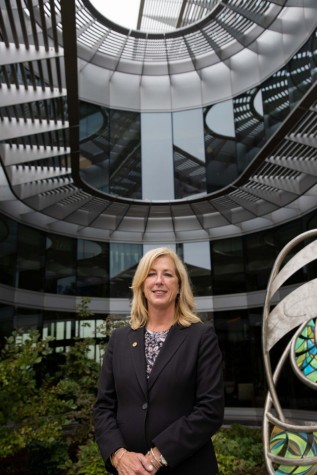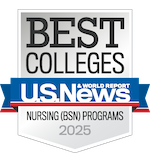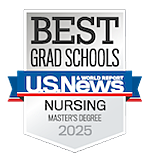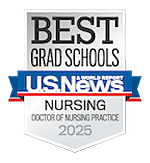Q&A with Dean Hurn
 Julia Cooney (JC): Since you became dean of the U-M School of Nursing, you have made innovation one of the primary focuses for the School. What outlets are there for students and faculty to develop more as innovators?
Julia Cooney (JC): Since you became dean of the U-M School of Nursing, you have made innovation one of the primary focuses for the School. What outlets are there for students and faculty to develop more as innovators?
Dean Patricia Hurn (PH): I want innovation to become part of nursing’s identity, but that’s not something that you just snap your fingers and it happens. The first step in making that happen is creating an environment at the U-M School of Nursing where everyone can see that innovation is valued. At a student level, we’ve created extracurricular activities like our Student Voices program, which is intended to be a platform for a more active voice for students in the governance of the School and to bring ideas forward to make change. Now that might seem very basic, but if you want to develop innovators, you must create platforms that give them permission to drive change.
The Innovate 4 Change student hackathon is a more tangible way for students to apply an innovative mindset to a practical application in the real world. This is the inaugural year of the event. It is totally led by our nursing students and it will bring together interdisciplinary groups of University of Michigan students over five weeks, when they can collaborate and create innovative solutions to challenges related to environmental sustainability, health equity, psychological and physical safety of nurses and global health.
Our faculty, which will also serve as mentors during the Innovate 4 Change hackathon, need to see that we are invested in creating an ecosystem for them to develop as innovators as well. The Healthcare Innovation Impact Program (HiiP), which was created at our School almost two years ago now, offers our faculty health care innovation support and engagement services directly from the U-M School of Nursing. I should also mention that I think developing faculty, who are high-profile health care innovators, is a really important step in growth for our students. Students need to see and hear about innovation from the people who train them.
JC: What can the School do to develop more nurses who can advocate for themselves and the profession?
PH: There is an art and science to advocacy. Whether we’re talking about advocating for nurses to become more involved in leading innovation or a different model of care that provides more equitable access to care for communities, I think it’s important to recognize that there is a science behind advocacy. In nursing, I don’t think we’ve begun to fully explore that in a way that has been done in other settings. For example, we understand a lot about advocacy in public policy, but we don’t know much about how to alter local conditions for health care in communities. Nurses have certain skills and knowledge, like communicating very complex information to patients in very understandable terms, that can be put to better use to be advocates for issues that go beyond patient care. Skills like these we already know could help nurses lead the transformation of health care, but we should also be cognizant of the science that we haven’t yet developed that will show us how to apply these skills.
JC: What do you view as the first steps in laying the groundwork for the advancement of advocacy in nursing?
PH: First, on the education side, we need to embrace it and lace it through everything we do as we educate and train students. We need faculty who understand and are willing to teach it to role model it for our students. Our goal is to not only help develop that in our faculty, but also recruit new faculty who can add that science piece of advocacy we talked about. I know the will is there to do this. Now we need to develop the mechanisms and skills.
I hope the one message our students take away from me and the School is this absolute core belief that it’s up to nursing to transform health care. In order for our profession to lead that transformation, we have to know how to be effective advocates.





